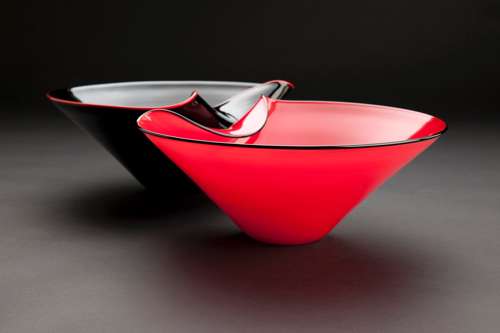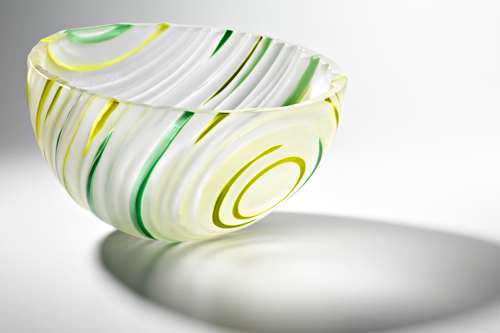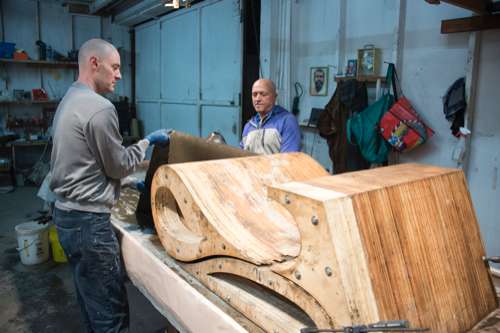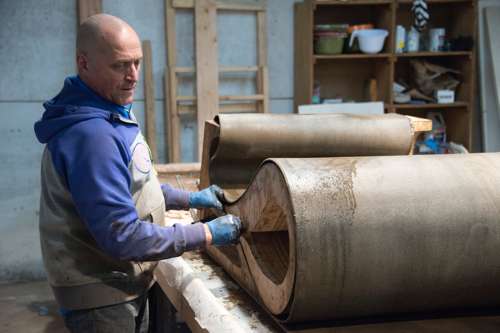Craftsmanship & Creative Risk-Taking A Panel Presented At The Interior Design Show IDS-Vancouver
By Laura Goldstein
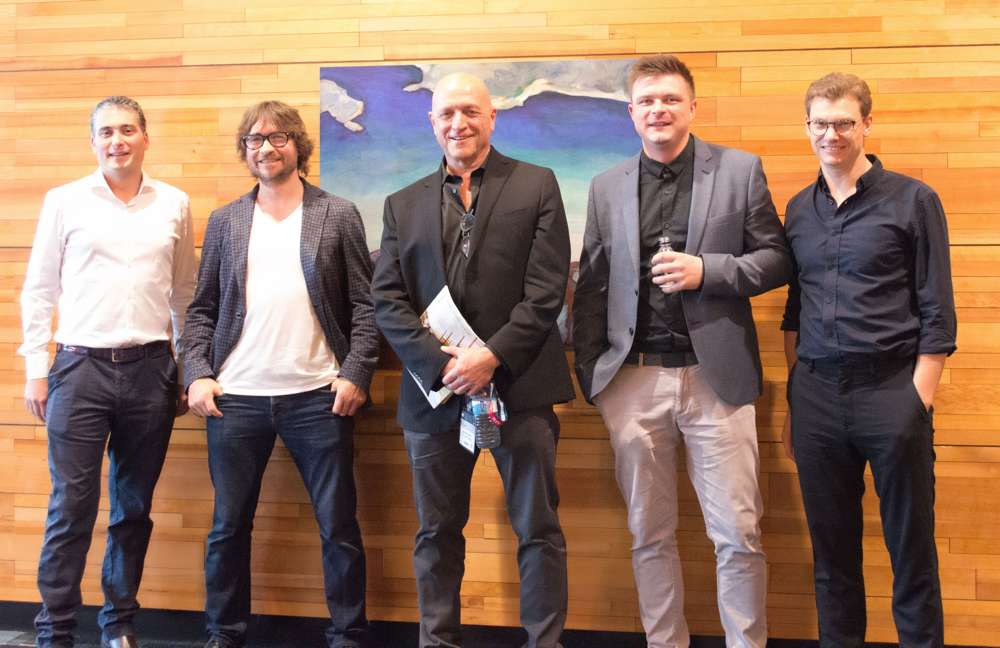
What happens when four of the Pacific Northwest’s most distinctive glass and furniture designers meet to discuss the trials, tribulations and personal success stories in each of their crafts? Lots of fascinating insight, true confessions and laughter, of course! Sponsored by SwitzerCultCreative the designers’ pieces were also presented in the SwitzerCultCreative Booth at IDS-Vancouver 2018, showcasing the company’s continued support of the region’s talented makers. Curated selections of the makers work are available to the consumer at their showroom, 1725 West 3rd Avenue in Vancouver.
Here are a few of the highlights:
The Panelists: Moderator, Sholto Scruton (Sholto Design Studio, Vancouver), Neal Aronowitz (Neal Aronowitz Design/Art Portland, Oregon), Jay Miron (Jay Miron Furniture, Vancouver) and Jaan Andres (Jaan Andres Glass Design, Vancouver.)
Sholto Scruton: Please introduce yourselves and tell us a bit about how you started.
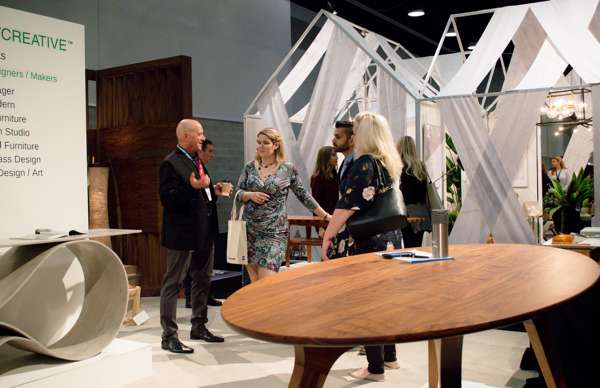
Neal: Unlike my fellow craftsmen here, I’m a little late to the party as I only started doing this work about four years ago. I’ve been in construction with my own company all my life but in the meantime made some furniture for family and friends- nothing very risky but filling dozens of sketchbooks. Then I thought if I don’t get going on my design work I’m never going to do it at all. So I entered a contest with my concrete canvas Whorl Design Table and won the People’s Choice Award from Azure Magazine. My second piece was a lighting design (Boro Boro Chandelier,) that I entered into the LAMP Competition in Vancouver and that won 2ndplace. I thought, this is normal – you enter things and you win! No, but seriously, I felt I had finally found my calling.
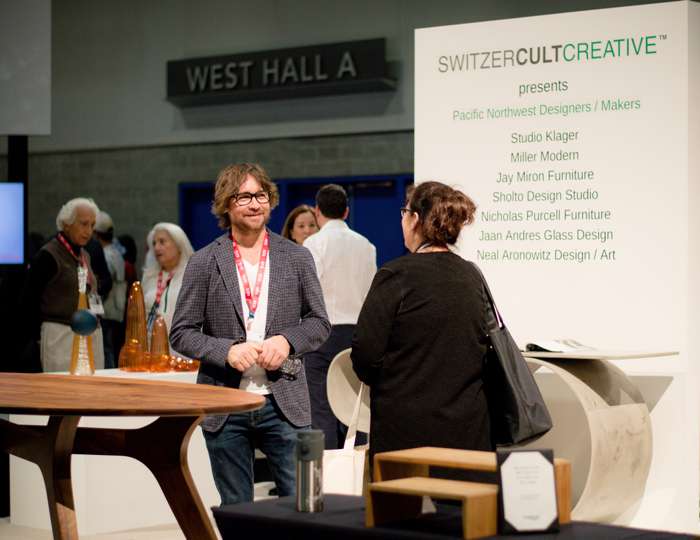
Jay: Hi everyone. I design and build furniture in my studio in East Vancouver. I’m a former professional athlete, a BMX bike-rider but I retired from my career- too many broken bones – so I started a bike company. It got huge with a ton of employees but I was just not happy. I sold everything and went to wood-working school and interior design school and began designing and building custom furniture.
Jaan: I’m a glass-maker originally from Haliburton, Ontario and Calgary. I went to the Alberta College of Art & Design where I discovered glass-making at 18 -years- old and have been doing it every since. In 2009 I travelled to Adelaide, Australia and I took part in a two-year boot-camp training program at the JamFactory working with dozens and dozens of sculptors and lighting designers.
I moved to Vancouver in 2015 taking a job blowing glass full time at BOCCI- you’ve all heard of Omer Arbel, and I teach part-time at Terminal City Glass in Vancouver.
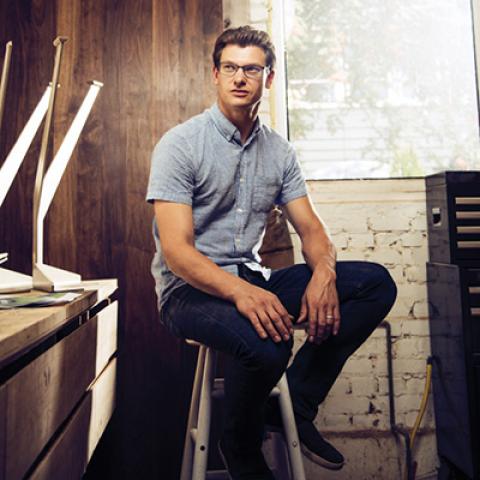
Sholto: I started repairing Victorian and Edwardian furniture with my Dad and Grandpa as a kid but wanted to be a painter. I did a Masters in Industrial Design and realized I really wanted to make furniture. I never wanted to work in a factory but ended up working in a factory for Bensen for four years! I learned a lot and designed sofas and finally, about 7 years ago I started my own company. I want things to endure and make things people love.
How is your work defined? By method or by the materials you work in?
Neal: I think it’s dangerous to be pigeon-holed but if I have to be defined by something I think it would be working with concrete canvas because I think I might be the only person in the world working with it.
Jay: I agree with you Neal. I don’t like to stick myself into a box or category. I’ve mostly worked with wood so far but I’m really excited that next year I’m going to be working with metal, glass and stone. I think the biggest thing we have to offer as craftspeople is the ability to go in different directions.
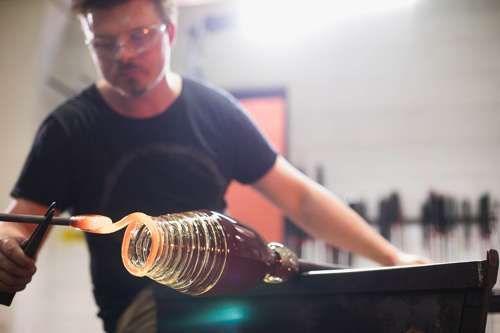
Jaan: I have to admit I’m slightly more defined by my material in that I’m very much a glass nerd – I’m in love with the material. Frankly, I don’t think that pigeon-holes me. It just interests me to no end, blowing glass is so vast and capable of so many different things. I like to define my method as doing a few things really, really well.
But, I have to tell you making a living is also important. For instance, last week I had the weirdest commission I’ve ever had in my life! A lady wanted a glass strawberry and vanilla ice-cream cone sculpture with a cherry on top made for a Statue of Liberty scale model
(lots of laughter)
Sholto: I’m really defined by method because I come from a design background. I’m concerned with problems. We set out with a brief and that’s very pragmatic. The material is whatever it has to be. Sometimes it makes sense to do one thing one way.
What is the value of craft today where high quality production is so widely accessible?
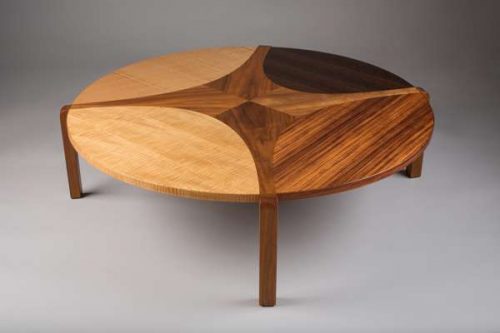
Jay: I’m quite qualified to answer this question because I’ve worked on both sides. My bike company manufactured everything overseas and now I’m an independent craftsman. I believe there’s a time and a place for production because 90% of what people want is to fit in whether it’s wearing the same style clothes, go to the coolest restaurants or listen to the music that’s in style. Just a small percentage want to stand out. They want spectacular objects in a beautiful home and that’s where people like us come in.
Jaan: You’re totally doing it Jay! I interpreted the question as what is the value of craft in today’s manufacturing zeitgeist? I think craft is invaluable because it predicates all the objects that are manufactured- you still can’t just think objects into existence, although maybe we’ll be able to do so soon. You need to address your tools whatever they may be and pick them up and make something. I’m terribly biased of course because I think craft will become even more coveted in the future and not made obsolete by manufacture.
Neal: Today it seems like everyone can be an artist with a computer and 3D printing but that never interested me. I think the products are lifeless. There’s something about the human element that’s inexplicable and I don’t think anything will ever be able to replace that. I don’t think a machine can create soul and that’s what we’re looking at as craftspeople.
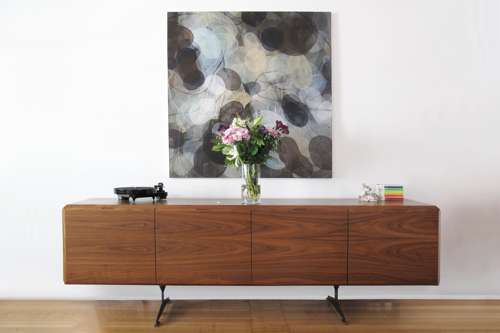
Sholto: I think there’s a beautiful balance between the two. The danger is if you remove craft from the equation then you’ll have nothing to model your machines after.
What’s the most challenging aspect of balancing commercialism with your own work and still make a living?
Jaan: You have to remain very honest and integral to what you do. You put your own ego out in the world of Instagram then have to put a price tag on it.
Neal: I’m constantly battling if I want to please somebody else. What really matters to me is the process of what you’re doing and money is just the reality that we all have to deal with.

